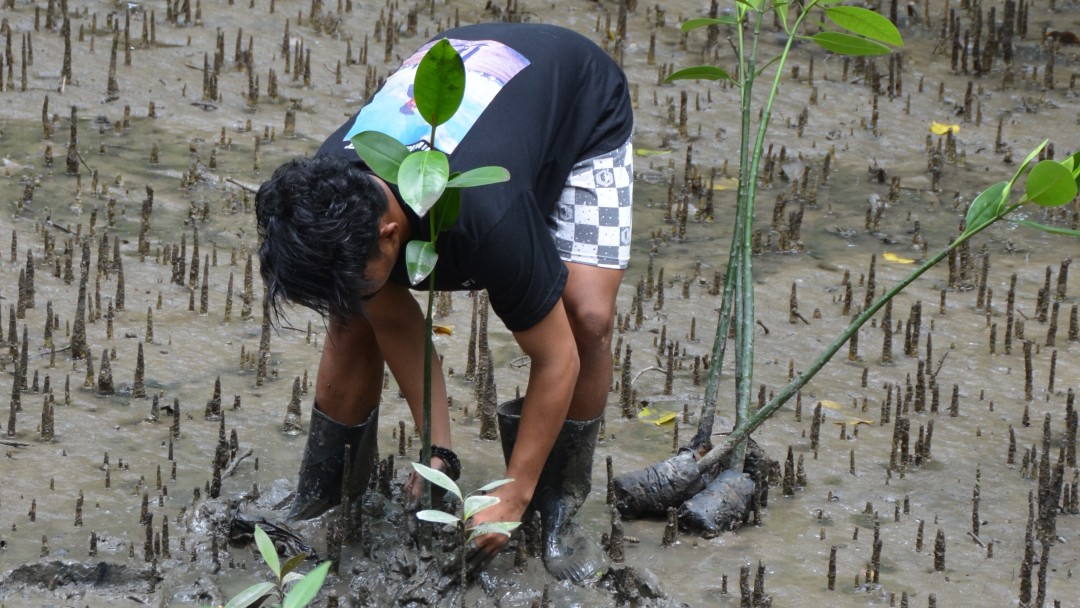
Indonesia has the largest mangrove forests in the world. However, the currently 3.56 million hectares are only a remnant of the original stock. The valuable forests shrank by a third between 1980 and 2005 alone. On behalf of the German Federal Government, KfW is now supporting the island state to effectively protect existing areas and reforest new ones. The benefits are two-fold, as local communities also profit from the activities.
“In our village, everyone – other than small children and the elderly – is busy planting seedlings,” said Mr Kisman, Chair of the local forest protection committee of the village of Pegat Betumbuk in the district of Berau on Borneo. His municipality is one of ten in which mangrove forests are reforested with the support of KfW and, at the same time, new sources of income are developed for the residents. In total, more than 34,000 people in 79 communities – including indigenous communities – benefit from the project, which is implemented in three project districts.
The mangrove forests, the stock of which has fallen dramatically, protect the coasts of the Indonesian islands from erosion and cyclones. This is becoming increasingly important, as the country, with its 13,000 islands, is one of the regions most affected by the consequences of climate change worldwide. Mangroves form an important ecosystem. Seventy species of trees and shrubs alone grow in the transition zones of fresh and salt water. Here, fish, crabs and prawns spawn and raise their young. In addition, the mangrove forests are a gigantic carbon sink, absorbing five to ten times more greenhouse gases per hectare than a comparable area of rainforest.
This precious ecosystem is increasingly being destroyed, especially by the rigorous spread of aquaculture for the breeding of prawns and edible fish. In addition, illegal logging, the conversion of land to produce oil palm plantations, general marine pollution and mining threaten Indonesia’s coastal forests.
The Indonesian government wants to stop the decline of valuable forest areas. On behalf of the Federal Ministry for Economic Cooperation and Development (BMZ), KfW supports the country in protecting its natural resources with several coordinated forest programmes. It is providing EUR 20 million for the protection of mangrove forests alone. The aim is to reduce the deforestation rate by 20 - 30% by the end of the project compared to a scenario without project activities.
In villages like Pegat Betumbuk, people are planting to reforest and rehabilitate mangrove forests – seedling by seedling. The funds provided by the project ensure this work can be remunerated. Sustainable climate protection can only succeed if the local population is able to maintain a sufficient standard of living without excessively exploiting the forests. This is why the KfW project focuses on creating other income streams, including things like the sale of sustainably produced crabs, prawns and fish products. The support helped Ms Umi from the village of Teluk Semanting on Borneo to build a small business of her own. “I now produce around 90 kilos of dried fish chips every month, earning around 7.7 million Indonesian rupiah.” She has invested the equivalent of EUR 500, some of it to expand chip production, and some for her children’s school attendance and studies.
Share page
To share the content of this page with your network, click on one of the icons below.
Note on data protection: When you share content, your personal data is transferred to the selected network.
Data protection
Alternatively, you can also copy the short link: https://www.kfw-entwicklungsbank.de/s/enzBY2ib
Copy link Link copied